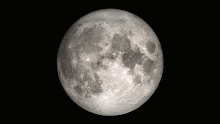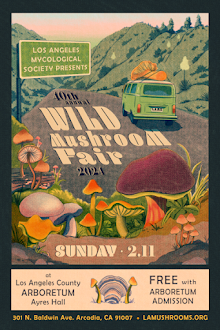

(Shi Heng Yi) The last video about cannabis and spirituality we need (a motivational speech)
The human species has had a close relationship with cannabis (marijuana, flower, weed, pot, ganja) for thousands of years. In fact, it is among the earliest plants humans cultivated.
For the study, the researchers analyzed 110 different cannabis genomes from around the world. Using state-of-the-art DNA sequencing technology, they were able to gain a better understanding of how Cannabis sativa diversified over time.
The researchers believe that basal cannabis resembles wild varieties that grew before human agricultural intervention more than any other variety.
They further determined that the split between basal cannabis and cultivated varieties likely happened almost 12,000 years ago.
 |
| Might medicinal have saved her? |
Yet, it has also had a turbulent and controversial history due to the psychoactive properties of some varieties. Other varieties, such as hemp, are low in THC, yet proved to be the perfect crop for textiles and industrial applications.
 |
| Largest hemp field in Europe (wiki) |
So many varieties arose over time that the line was blurred between wild and cultivated strains.
However, a research team recently uncovered new insights into how Cannabis sativa first arose and how it eventually split into the different varieties known today. These novel insights into the ancient origins of cannabis have provided a new perspective on the evolution of this incredibly versatile plant.
Cannabis Cowboys of the Old West
The Untold Story of Cannabis Cowboys | Smoking Cannabis the Wild West Way
- (Legacy Capsule) May 1, 2025: UNITED STATES. Explore the rugged landscapes of the Wild West, a time when cowboys roamed freely, outlaws held sway, and an unexpected secret flourished: cannabis (aka marijuana). From Mexican laborers to defiant frontiersmen, this plant transcended its medicinal use to become a vital aspect of life. But how did it influence the Old West, and why has it been overlooked [by American historians]? Let's delve into the concealed history of cannabis cowboys and the role of marijuana in the Wild West.

Let's finish here then go get high as a mother... - In the 16th century, cannabis made its way to the Western hemisphere, introduced by Spaniards, who brought it to Chile, South America, primarily for [hemp] fiber production. In North America, the Spanish also cultivated cannabis, focusing on hemp across various farms [hempsteads]. During the early [British] colonial era, hemp emerged as a vital crop for farmers. Alongside tobacco, it became a significant export long before the American Revolution began. This journey started in 1611 when the first settlers of Jamestown, Virginia, transported several [cannabis] plants across the Atlantic. By 1619, King James I urged the American colonists in Jamestown to enhance their cultivation efforts to benefit England. The Virginia Company, which managed Jamestown, instructed landowners to grow and send 100 hemp plants to meet England's demands. Over time, colonists expanded their hemp farming to strengthen England's foothold in the Americas.
 |
| The Natives said it's moxibustion medicine. |
How researchers figured out the ancient origins of cannabis
 |
| Drug abuse gives drug use a bad name -- making addicts out of users in search of dopamine. |
.
 |
| Wait, this "weed" was a long-trusted medicine? |
Through an analysis of the DNA sequences, the researchers were able to develop phylogenetic family trees that define the connections among various cannabis lineages. These maps reveal that there was a gradual evolution into four cannabis groups that are genetically distinct from one another.
The most interesting aspect of this study was the identification of "basal cannabis," a foundational group that had up to that point eluded detection among research groups.
'Shatter' cannabis dangers
(ITV News) Dab, shatter, butane honey oil (THC) invades suburban UK
- Hash oil dabbing: Highly potent, dangerous to deal, and extremely explosive (because of the butane in its production), Gregg Easteal explains how "shatter" poses a triple-threat as a deadly new breed of weed and a haunting form of merry-Juana.
Basal cannabis is regarded as a sister group to other varieties and is genetically distinct from psychoactive and hemp cannabis types. The basal cannabis group includes traditionally-bred local landrace varieties still currently found in parts of China, in addition to feral strains.
As reported earlier by Wisdom Quarterly (Medicinal Plants Workshop with Dr. Adams), USC's Dr. James Adams' realized that the old slang name for cannabis, Spanish Marijuana or "Mary Jane" (Maria Juana), is not of Mexican origin as assumed by many and promoted by police and governmental agencies like the FBI (think government propaganda film Reefer Madness); the original name is Chinese in origin, ma huang.
Dr. James Adams, USC, Chumash medicine man
We've all been lied to about "marijuana." We've been told it's a Spanish word used by Mexicans in North America (Mexico itself being in North America or Mesoamerica, not Central or South America) that means "Mary Jane." That's a lie, a purposeful piece of propaganda by the US government. Dr. Adams is a fluent daily speaker of Chinese who has been married to a Chinese woman for 42 years. He is able to demonstrate that "marijuana" is a Chinese term for cannabis: Má is "hemp," there's a middle part for "leaf" (ri or li), and hua or huáng means "flower." The Chinese were using cannabis for 12,000 years (as had neighboring India) or had historical records extending back that far for its medicinal and industrial use. Similarly, jasmine flower in Chinese is mo li hua. [Further proof: The medicinal plant stimulant, vital for nasal conditions, ephedra has a Chinese name (máhuáng), which literally translates as "hemp yellow." Case closed.]
(Cecilia Garcia and Dr. Adams)
Plant nootropics are better than synthetic pharma
 |
| Map of East Asia next to Central Asia |
In fact, the two share genetic markers that are not observed in contemporary cultivated strains.
Based on their findings, the researchers suggest that East Asia was the place where cannabis was first cultivated.
This new finding overturns previously held assumptions that the plant was first cultivated in Central Asia [where the Buddha was born in ancient Gandhara/Afghanistan].
Cannabis sativa versus Cannabis indica: the greatest lie ever told?
 |
| I could have lived? Nature has cures? |
To put that time frame into perspective, this period coincides with the beginning of agricultural practice itself, during the dawn of the Neolithic period.
Furthermore, it was around 4,000 years ago that hemp and psychoactive varieties split from a common branch on the tree.
- More: Scientists have discovered the ancient birthplace of marijuana (MSN)
- Bruce Abrahamse, Hearty Soul via MSN.com, April 22, 2025; ITV News, May 14, 2025; Eds., Wisdom Quarterly




















































































































































































































































No comments:
Post a Comment